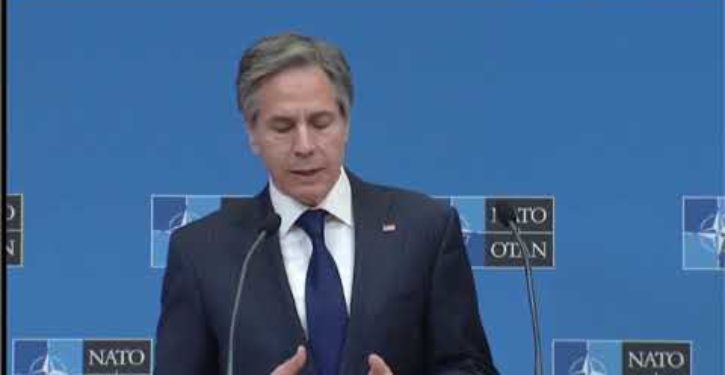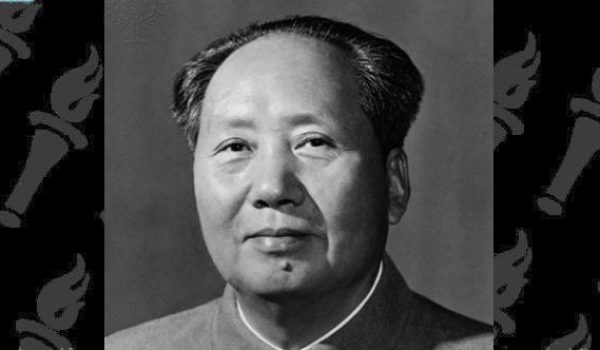
Is the U.S. on the cusp of a three-front world war against Russia, Iran, and China? If such a seismic event were to occur, would our nation’s 50-year-old all-volunteer force require a boost from — dare I even say it? — a reinstatement of the draft?
It was Jan. 27, 1973, when most American men aged 19 to 25 were able to celebrate President Richard Nixon’s abolition of the draft. Defense Secretary Melvin Laird announced, “I wish to inform you that the Armed Forces henceforth will depend exclusively on volunteer soldiers, sailors, airmen, and Marines.”
Although Jimmy Carter later reinstated draft registration, American men have escaped mandatory military service for two generations because millions of their patriotic brothers and sisters were willing to serve voluntarily, with thousands of them laying down their lives for their country.
There were 2,324 military deaths in Afghanistan, along with 3,917 U.S. contractor deaths. Iraq was equally costly, with 4,431 military lives lost and 31,994 wounded. Many others still suffer from conditions such as post-traumatic stress disorder.
Undoubtedly, the two 9/11-related wars took a toll on recruitment. One factor is a decline in patriotism. A June Gallup poll found that only 18 percent of 18- to 34-year-olds say they are “extremely proud to be American.” However, there are numerous reasons why fewer young Americans are enlisting.
In late August, a 10-page bombshell article, “A Call to Action: Lessons from Ukraine for the Future Force,” was posted on Parameters, the Army War College’s quarterly journal. The essay explained why the “1970s concept of an all-volunteer force has outlived its shelf life and does not align with the current operating environment.”
Katie Crombe and John A. Nagl, whose credentials cannot be lightly dismissed, wrote that “the U.S. Army is facing a dire combination of a recruiting shortfall and a shrinking Individual Ready Reserve.” The “shrink” they cite is alarming.
“The Individual Ready Reserve, which stood at 700,000 in 1973 and 450,000 in 1994, now stands at just 76,000. These numbers cannot fill the existing gaps in the active force, let alone any casualty replacement or expansion during a large-scale combat operation.”
As reflected in the title, the authors outline strategic “lessons from Ukraine,” including that conflict’s casualty rates, for future planning purposes. The lessons all point to their “Call to Action” for the U.S. military.
Crombe and Nagl also warn: “The technological revolution described below suggests this force has reached obsolescence. Large-scale combat operations troop requirements may well require a reconceptualization of the 1970s and 1980s volunteer force and a move toward partial conscription.”
Reinstating the draft, or “partial conscription,” would unleash powerful social, political, and cultural shock waves throughout America. After 50 years, any conscription, no matter how “partial,” would be off-the-charts contentious.
In addition to traditional ethical and constitutional concerns, it is hard even to imagine how well the “Hell no, we won’t go” of the 1960s would catch on in a modern era of social media. Many military-age youth would protest conscription as a violation of their individual liberty. Even when the draft is not deadly, it can sidetrack the lives of young men (or even women, if they are made to register) for years.
A draft may also force many to participate in activities that potentially contravene their moral, religious, or personal beliefs. Just imagine if conscription were deemed essential to help defend our ally Israel. War would break out on college campuses, would it not?
As in the Vietnam era, a draft could also disproportionately affect disadvantaged communities. Families with more resources often find ways to avoid conscription, whereas those of lesser means are more likely to bear the greater burden. Even where this doesn’t happen, the suspicion that it does will intensify resentments.
Nonetheless, with warring headlines from the Middle East, combined with Ukraine‘s lessons and warnings from Crombe and Nagl — published six weeks before Hamas attacked Israel — one imagines the Pentagon is forecasting its conscription needs, “just in case.”
The potential for the U.S. to help defend Israel against Iran’s proxies, Hamas and Hezbollah, could turn into a more expansive and prolonged war with American boots-on-ground engagement. Simultaneously, Ukraine’s fight against its Russian invaders continues to strain American stockpiles of military hardware and ammunition that are also needed for Israel.
Meanwhile, the Israeli conflict could negatively affect U.S. military recruitment. Even before the Hamas attack, every branch was falling short of its goals except for the smaller Marine Corps. According to the Department of Defense, for 2023, the Army is short 15,000 recruits, the Navy is down 10,000, and the Air Force 3,000.
With those statistics in mind, think back to what happened on Oct. 19 when several major news outlets were forced to fact-check a deep-fake AI video showing President Joe Biden “announcing the reinstatement of the draft.” In this video, initially posted in February, Biden appears to state that he will “invoke the Selective Service Act, as is my authority as president.” (False — that is the job of Congress.) The video concludes with Biden saying, “Remember, you are not sending your sons and daughters to war. You are sending them to freedom. God bless our troops, and God Bless Ukraine.”
The bizarre Ukraine sign-off was another clue that the video was inauthentic. Israel was attacked on Oct. 7, and the February video resurfaced days afterward on Facebook and TikTok. (You can still watch it here.)
USA Today noted the fake short-lived draft announcement was “shared more than 400 times in four days. And “on TikTok more than 20,000 times in five days.”
Naturally, there was outrage and profanities from those who believed Biden’s deep-fake AI-generated draft call.
Since 1980, the Selective Service has required “men aged 18 to 25 to register” and “participate in a national draft lottery, should the President and Congress reinstate conscription due to a national emergency.” At any time, Congress could modify the law to require female registration as well.
But everyone knows that reinstating the draft will spark a fierce domestic battle, detracting from the war effort. After 50 years, a 21st-century draft would be a national nightmare. But could reinstating a draft be worse than potentially losing a major war?
Let’s hope Americans don’t have to answer that question.
Myra Adams served on the creative team of two GOP presidential campaigns, in 2004 and 2008. Follow her on Twitter @MyraKAdams.
Cross-posted at Substack and The Hill.



